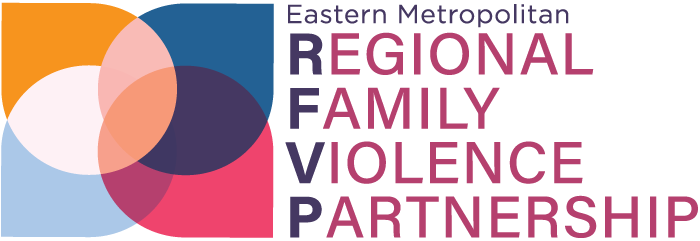All people and communities are free from family violence and have freedom and choice over their lives
The Disability Inclusion and Safety Resource Hub has been developed for organisations and practitioners who are working with people with disability who are experiencing or using family violence.
The Resource Hub provides ready access to important resources that promote safety, accessibility, equity and inclusion of people with disability which can aid in reducing barriers and increasing safety. Resources are relevant to Organisational Leaders, Specialist Family Violence and Sexual Assault Practitioners, Disability Services, Health, Family Support, Education and others.
Family Violence towards women & children with disabilities often more dangerous and more sustained. Women and children with disabilities can experience family violence from multiple perpetrators in multiple settings including home & community, or an institutional environment, and violence may occur multiple times across the course of their lifetime.
For Specialist Family Violence and Sexual Assault Practitioners, there is a need for nuanced Risk Aassessment and Safety Planning, also taking into account perpetrator patterns of behaviour and disability-based violence.
Persons using violence towards people with disability may target perceived ‘vulnerabilities’ or use ableist beliefs to weaponise the structural inequality, barriers or discrimination experienced by the victim survivor. They may use these tactics as a way to methodically gain power and control over the victim survivor and avoid taking responsibility for their use of violence.
Stereotypes about disability can form the basis of narratives provided by perpetrators to minimise or justify their family violence behaviour.
These ableist stereotypes and beliefs can also affect professionals’ responses to people with disability, through colluding with the narrative of the person using violence.
Common presentations of family violence behaviours and narratives among people who use violence against people with disability include:
– Exploiting community attitudes of carers being ‘virtuous’ and ‘helpful’ as a tactic of system collusion, undermining the victim survivor’s involvement in the service.
– They may present to the service in a way that the professional believes the victim survivor is ‘lucky’ to have them in their life. Similarly, the perpetrator may blame ‘carer stress’ as a way to avoid taking responsibility for their actions or behaviours, or minimise their violence or its
impacts on the victim survivor.
– Undermining or pathologising a person’s cognitive capacity, for example, through statements such as, ‘They’re crazy, you need to speak with me because they don’t understand things.’
– Weaponising community assumptions about people with disabilities as parents and threatening to institutionalise the victim survivor, and/or to have the victim survivors’ children removed.
People who use violence who are carers may also exploit confusion around navigating support systems such as the NDIS or Centrelink to maintain control as ‘gatekeepers’ to service access. For example, the person using violence might:
– Be the NDIS nominee and exploit this to make decisions for the person with disability, isolating them from support and misuse their finances.
– Present to services with the victim survivor and answer on their behalf and not allow the victim survivor to respond.
– Constantly express dissatisfaction with services or carers who are sent to provide in-home care. This constant dismissal of services could be another tactic of isolating the victim survivor and maintaining control.
Source: MARAM practice guides – working with adult people using violence
This section includes foundational resources that outline the experience of family violence towards women with disability.
Other sections that Family Violence and Sexual Assault Practitioners should refer to include:
▪ Applying a Disability Lens to MARAM
▪ Reducing Barriers of Access for People with Disability
About this resource: Women with Disabilities Victoria have led advocacy in relation to the impact of family
violence upon women with disability. There are a range of resources and information available on their website which reinforces best practice when responding to women with disability disclosing family violence.
Applying this resource: For practitioners working with women with disability.
About this resource: Women with Disabilities Victoria have developed this Resourced to provide information to workforces in disability, social services and violence prevention on how Women with Disabilities
Victoria (WDV) understands disability, and how we want key stakeholders, policy makers, planners and other organisations to think about disability.
Applying this resource: For organisations and practitioners working with women with disability.
About this resource: Patricia Giles – Centre for Non-Violence have produced a Best Practice Guide for Family violence and disability services when supporting women and children with disability experiencing violence.
There is also a suite of practice resources including:
– Best Practice Guide
– Disability Inclusive Family Violence Services
– Information for family and friends
– Journey Map
– Learn from out experience (voices of victim survivors)
– You Have Rights
– You Have Rights (Easy Read)
Applying this resource: For organisations and practitioners working with women with disability who are experiencing family violence.
About this resource: Women with Disabilities Victoria have led advocacy in relation to the impact of family violence upon women with disability. This Guide reinforces best practice when responding to women with disability who are experiencing family violence.
Applying this resource: For organisations and practitioners working with women with disability.
About this resource: This position statement provides key considerations in relation to women with disability who experience family violence.
Applying this resource: For organisations and practitioners working with women with disability.
About this resource: The choices people make about language have an impact on the way people with disability feel and are perceived in society. It is important there is awareness of the meaning behind
the words that are used when talking to, referring to, or working with people with disability.
Disrespectful language can make people with disability feel hurt and excluded and be a barrier to full participation in society. People with Disabilities Australia Language Guide has been written by people with disability to assist the general public in talking about disability.
Applying this resource: For specialist family violence and sexual assault organisations and practitioners.
About this resource: Safe and Equal website has a dedicated section to supporting people with disability and resources relevant to Family Violence and Sexual Assault practitioners and organisations.
Applying this resource: For specialist family violence and sexual assault organisations and practitioners.


All people and communities are free from family violence and have freedom and choice over their lives
![]()
Subscribe today to the RFVP Newsletter by filling out your details below.
Copyright RFVP 2025, All rights reserved
Website designed by 2dog creative
